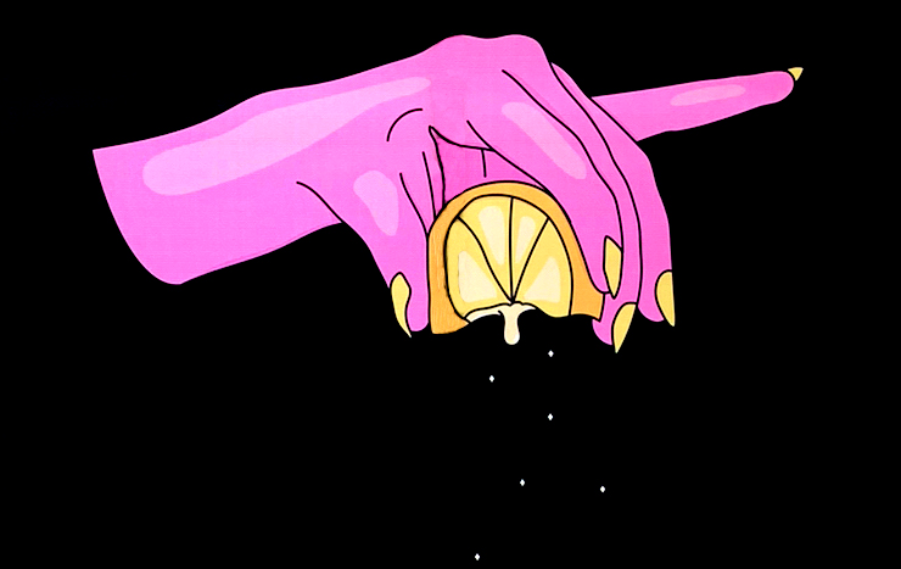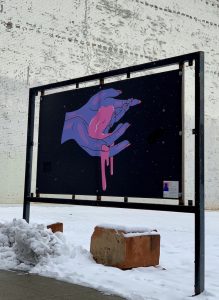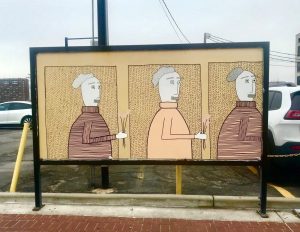 “Lemonade.” Original design by Alethia Lunares, with additional editing by Malathi Gunawardena | The Daily Utah Chronicle. (Courtesy Craft Lake City)
“Lemonade.” Original design by Alethia Lunares, with additional editing by Malathi Gunawardena | The Daily Utah Chronicle. (Courtesy Craft Lake City)
Art is the cornerstone of transformation. Why should people invest time, money and energy into watching performances and viewing exhibitions which do not always speak to them? The answer lies in the two-way relationship between the artist and the viewer. Without the support of a community, an artist will no longer be able to produce artwork. While sometimes an artist’s work reads as meaningless fluff on a stage, canvas or screen, every once in a while, the artist will strike gold and reach at least a small portion of audiences on a profound level.
It can be difficult to navigate the world of the arts — to decide what is authentic work and what simply exists to feed an artist’s income. However, an examination of the artist’s perspective explains why art should be central to every person’s life.

Craft Lake City, a non-profit organization located in Salt Lake City, is an excellent example of an organization which supports aspiring artists. Their mission is “to educate, promote and inspire local artisans while elevating the creative culture of the Utah arts community through science, technology and art.” Shelbey Lang, the Artisan and Programs Coordinator of Craft Lake City said, “There isn’t a one-size-fits-all answer to why an artist should create work, as each artist approaches their craft and profession differently.”
Not every musician, sculptor or photographer will have the same motives and intentions behind their creations. While some artists create in order to express, others may create in order to appeal to the public. Both types of artists are valid. The artist who is performing, creating or producing for others may be attempting to spread what they believe is an important message. Sometimes an artist must conform to the public’s demands in order to be recognized, or in order to gain the necessary income to continue pursuing their passion. It is equally as important to recognize the artist who relies on self-expression. Self-expression does not denote egocentrism. Audiences may identify with and gain from an artist’s self-expressive work, and artists who display their work publicly often recognize the correlation between their experiences and the world and people surrounding them.
Malithi Gunawardena, a junior majoring in graphic design, shared her perspective on how artistry has informed her academic career. “Design is very applied. You work for clients and you work for other people and you’re not doing it necessarily to say something about yourself… but my portfolio pieces that are the best and that people love are the ones where I am very clearly in that piece.”
Gunawardena has found ways to authentically produce work that is essential for other people. “You bring your own taste to the table,” she said. “I think it’s very important not to lose that in the process of any art-making because that’s what sells… and what matters.” It can be difficult to strike a balance between satisfying the public and remaining true to oneself. It is also challenging on behalf of spectators to filter through artwork and find people, such as Gunawardena, who have discovered this balance.

This is why building a receptive palate is essential. By viewing exhibitions, performances and other artistic productions as often as possible, a viewer can create a base on which to determine which forms and specific works of art appeal to them. After constructing a repertoire of artistic experiences, it may be easier to recognize authentic work as well as to connect to artwork on a personal level.
“Art has the ability to be transformative. It can open us up to new ideas and new ways of thinking, it can give us insight into the experiences of others and can spark important conversations that may otherwise not take place. Art serves as a record and reflection of our history, culture and the current moment, and it helps us to understand ourselves, each other and the world we live in,” said Lang.
Although it is easy and sometimes necessary to indulge in popular culture and to gravitate towards more established artists, supporting local and developing artists is valuable. Without a community’s support, an artist has little hope of reaching their full potential. Artists and audiences should take part in the symbiotic relationship. Community members can support local artists in order to give them a voice. Artists can then have the chance to provide new perspectives and provoke self-reflection. Use your ArtsPass to attend more arts events on campus during the school year and explore what is happening in the lives of local artists beyond the U.
s.santannaskites@dailyutahchronicle.com
Visit the original article here.